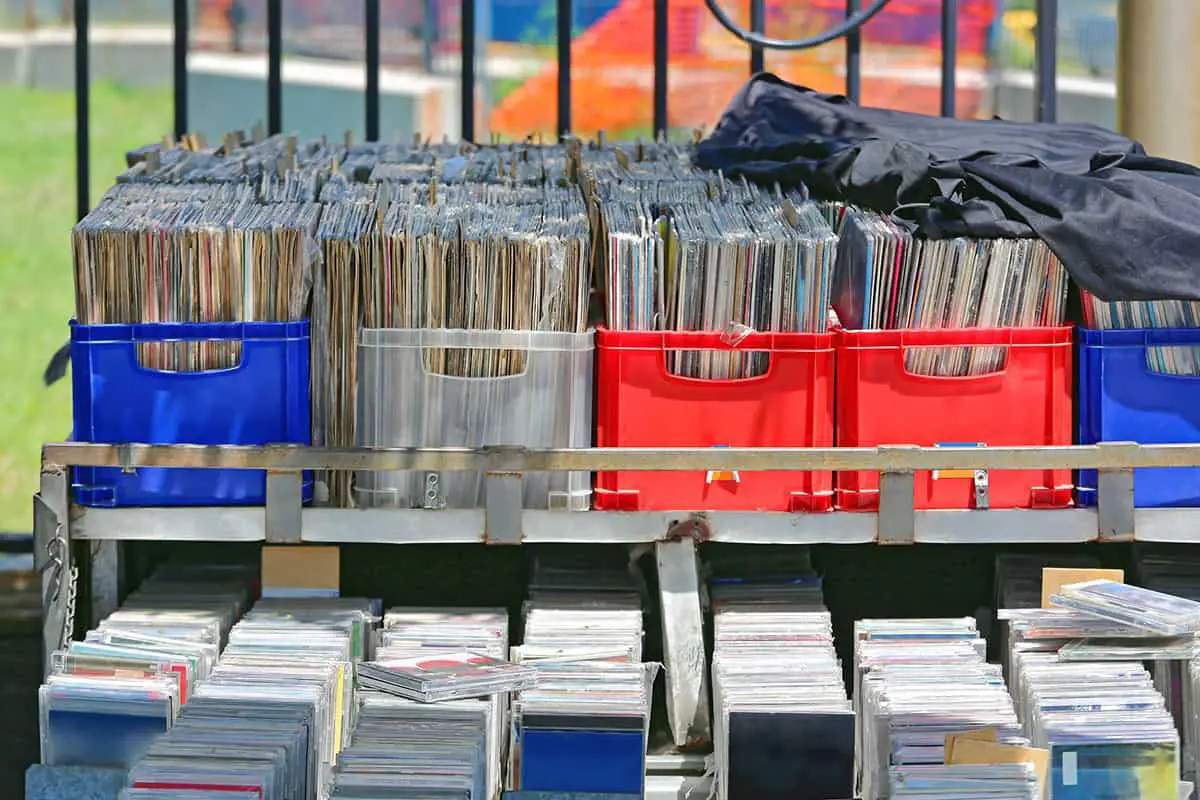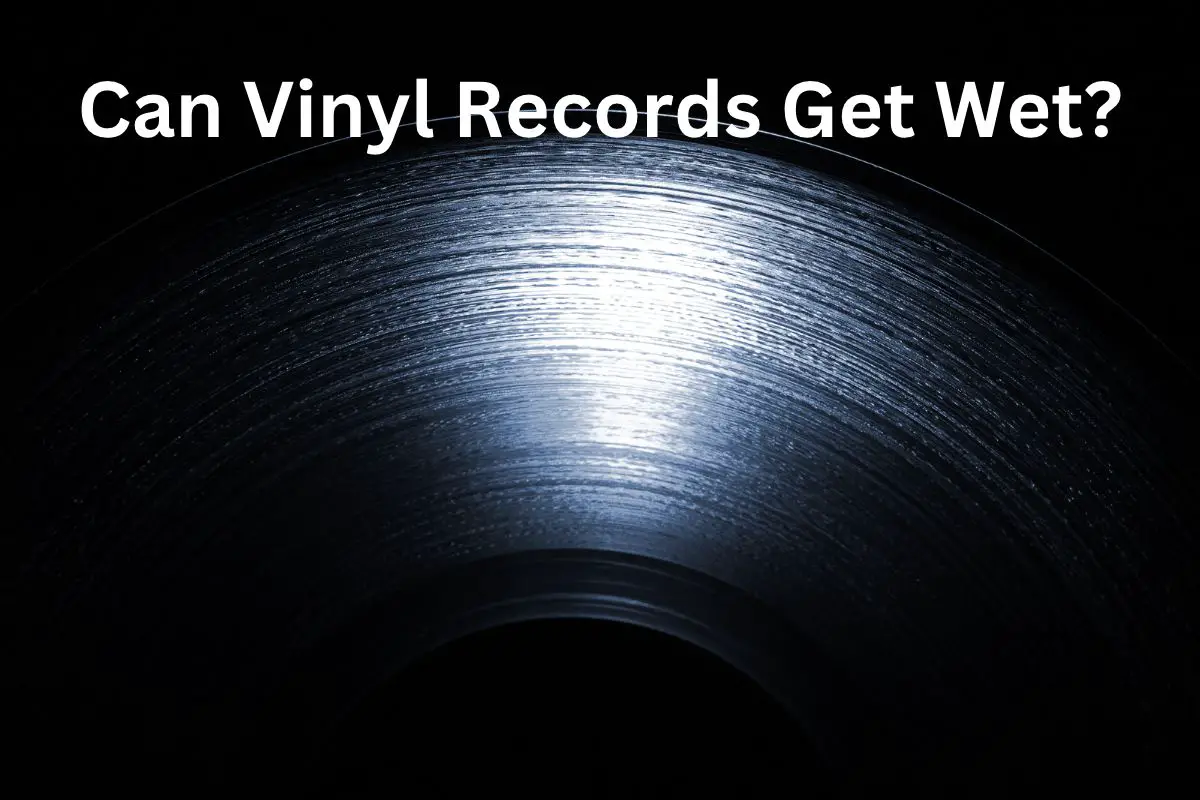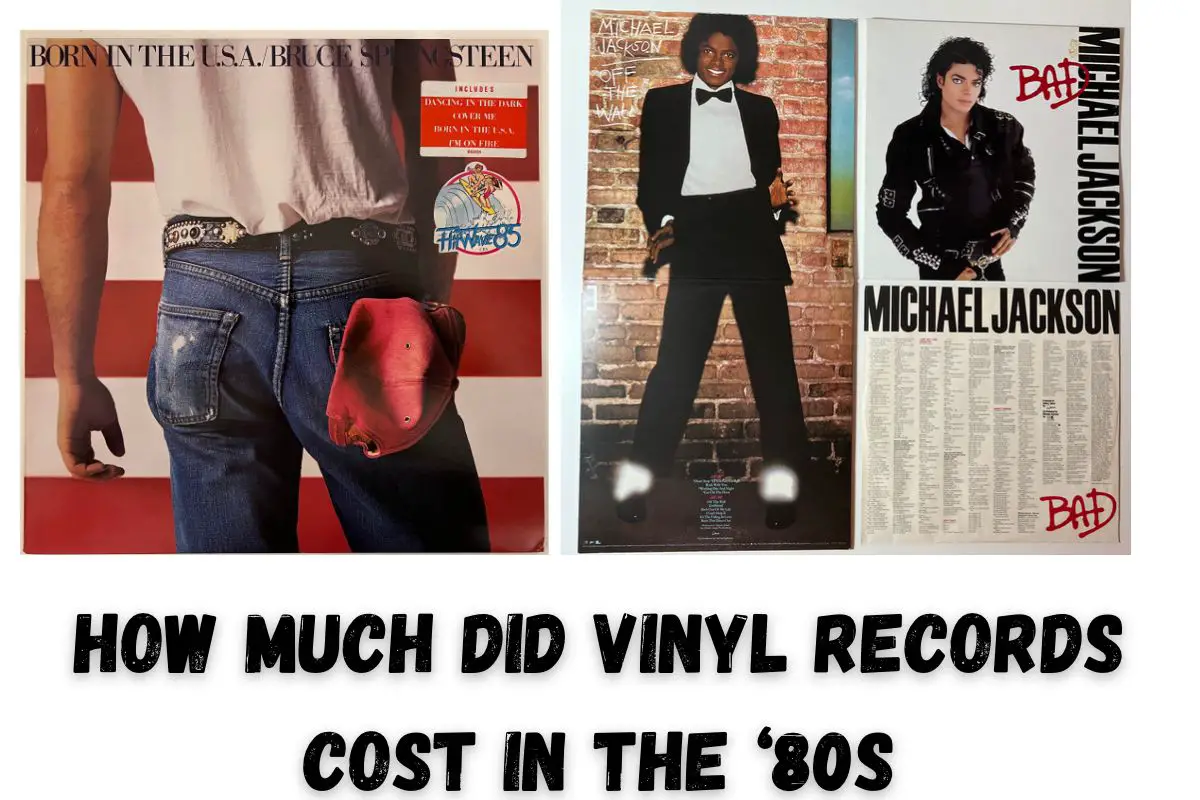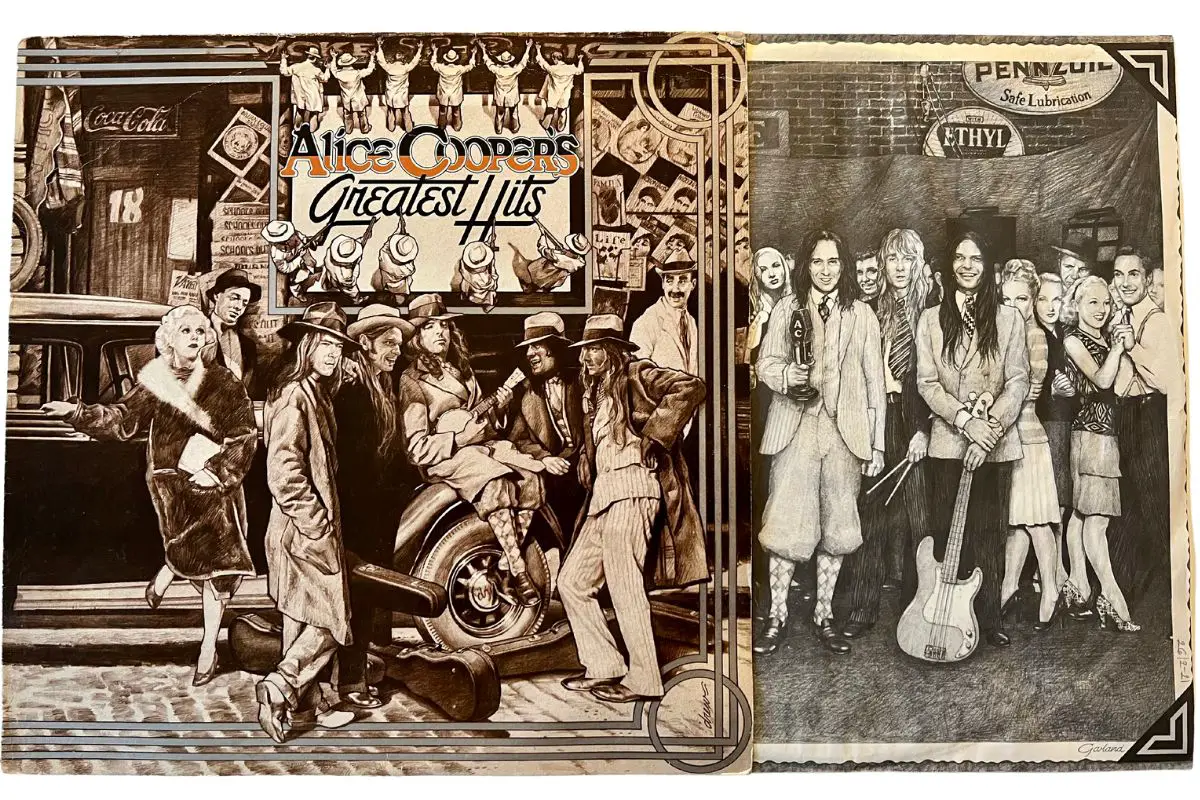This post contains affiliate links.
Vinyl records are extensive for music enthusiasts. Vinyl records have been gracing listeners since the 1900s, but while they’re thought of as retro, that hasn’t deterred music consumers from continuing to purchase them. Increased purchases means a high need to store them properly.
Vinyl records can fit in old or modern oversized milk crates. About 40 to 50 records can fit in an old milk crate or an oversized crate, which will hold the vinyl albums upright and keep them safe. Plus, the handles on milk crates make for easy carrying.
After decades of storing music electronically and online, vinyl started to see a resurgence in popularity around 2010, which means that record collections are just getting bigger! So, let’s talk about how and where to properly store records so that you can keep them safe and organized for years to come.
Table of Contents
Records Stored in Milk Crates
Vinyl records aren’t just excellent sound quality in a unique design– they’re iconic.
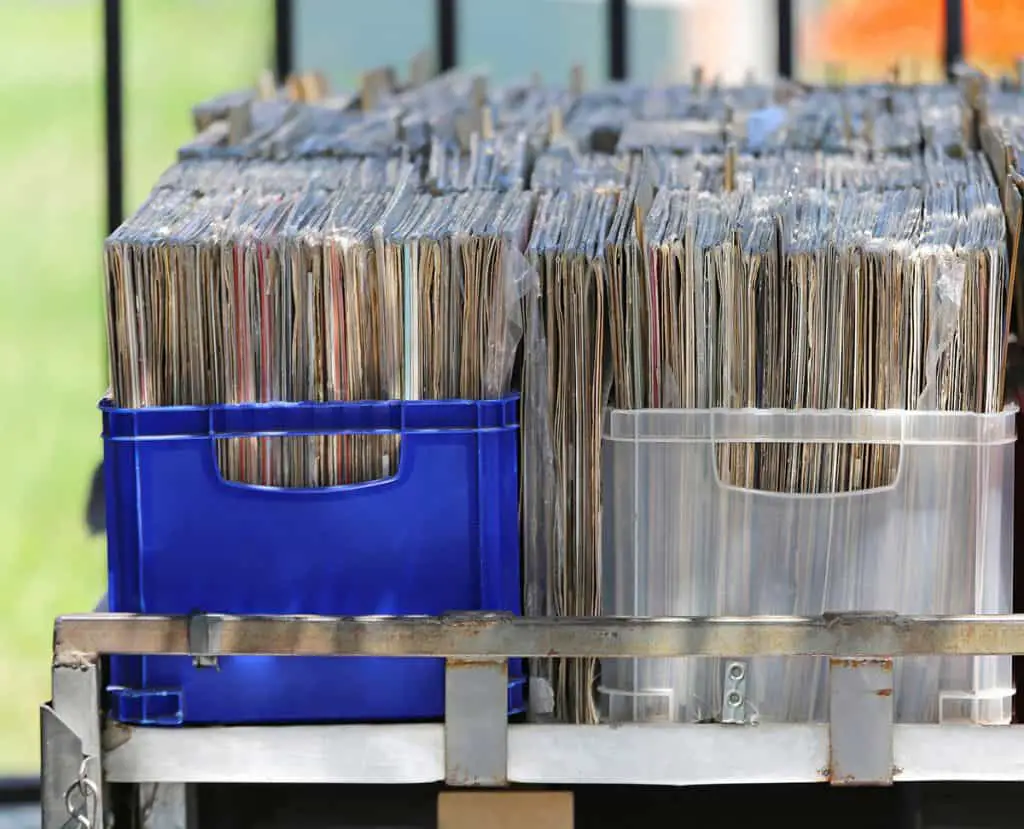
For decades, vinyl records have been the stamp of authentic musicians and enthusiasts alike. While they’re classic markers for the 60s and 70s, modern-day musicians and collectors still enjoy using them and displaying them.
However, if you’re music enthusiasts with lots of records beginning to pile up, their iconic-ness can become less admirable and more obnoxious if they’re not correctly stored.
You want to keep your collection safe and accessible, I get it, but they take up space. So, what can you do to maintain the integrity of your records while also preserving your space? Well, old-school milk crates have been the go-to storage method for decades.
Collectors have loved milk crates for ages because of their durability, portability, and size. However, the new milk crates aren’t precisely the right size though. If you want to use milk crates to store your collection, make sure they’re the old ones or the new oversized ones.
However, be careful!
If you elect to use milk crates, just know that there could be some possible consequences. While repurposing these items seems like a recycling win, there has been some pushback against using them for vinyls.
For example, this article from the Vinyl Factory claims that dairy companies estimate losing about $80 million annually from milk crate thefts. So, by all means, don’t steal one! Hop down to a vintage store, antique store, or your local thrift shop to find a reliable source for your crates.
What Size Crate Holds Records?
You have to take storage seriously when you have a vinyl collection – whether it’s a group of 10 records or 1,000. Vinyl is sensitive to wear and environmental factors. Considering things like temperature, light exposure, and storage bins will keep their top shape.
A crate that is 12 by 12 inches (30.5 by 30.5 cm) or larger holds records. On average, an LP record jacket is 12×12 inches (30.48×30.48 cm), so your crate should be just a tiny bit bigger to ensure that there’s room for you to slide your LPs in and out of the container easily.
Make sure to select a crate or bin with enough room for your records without stacking them flat on top of each other. Vinyl can be heavy, so when you pile them on top of each other, even just a dozen or so could cause warping damage. So, always stand them up!
The old-school milk crates are the perfect dimensions for storing records at 12×12 inches (30.48×30.28 cm). And, if you’re looking for a practical storage option, the handles on them make them perfect for transporting.
Other Album Storage Options
So how much space do you have available to store your collections? And just how many records do you have? Answering these questions will help you determine the best ways to keep your vinyl.
Crates and bins are great for most folks with about 10 to 100 records. If your collection is significant, though, you may want to consider installing shelving units. There are so many aesthetically pleasing ways to store your vinyl collection. Check out this article from Funky Moose Records to get some inspiration.
If you’re looking for a store-bought storage option, try the KAIU Vinyl Record Storage Holder (available on Amazon.com). It’s a wooden holder that can hold up to 50 records. I love this holder and think it makes a lovely piece of furniture to display my prized collection.
The great thing about your collection is that it’s your collection. So if you want to have floor-to-ceiling shelving units installed to store your vinyl collection, you totally should! Or, if you prefer more minimalistic looks, you can use primary bins and cabinets.
Remember to keep your vinyl records stored in an upright, vertical position. Holding them horizontally can lead to damage. Also, if you’re going to use shelving, make sure that it’s sturdy. As I mentioned before, a vinyl collection can be heavy. Whatever you put them on needs to be able to support their weight.
You also want to be sure to keep them away from any place with the potential to flood or cause water damage for the same reason that you want to avoid humidity. Vinyl records are susceptible to mold growth, and if you’re not careful with your collection, irreparable damage could ruin your records.
Best Ways To Store Vinyl Records
Remember that where you store your records is equally important as what you store them in.
As I said previously, you never want to stack vinyl records on top of each other. When you do, their weight can warp the ones on the bottom – even if it’s just a few of them.
Another no-no to keep in mind if you’re considering how to best store your collection is the location. Is your space getting a lot of sunlight? If so, you may want to pick a different room or area since too much sunlight can also cause vinyl records to warp.
A cool, dry space is best for storing records. However, too much humidity can also harm your records. High humidity can create growths in the inner grooves of the vinyl and create mold in the jackets.
Related articles:
- How to Store Vinyl Records: 8 Things You Need to Know
- Can Records Be Stored Horizontally?
- Can Records Be Stored in Cold?
How To Store Vinyl Records Without Sleeves?
Maybe you lost the cover or had a bad buy with mold, but either way, if you find yourself without covers for your vinyl records, you may be wondering how you can keep your collection safe and accessible.
To store vinyl records without sleeves, you’ll need to clean them thoroughly, purchase or make a replacement cover to prevent scratching and UV damage, and keep them upright to prevent warping.
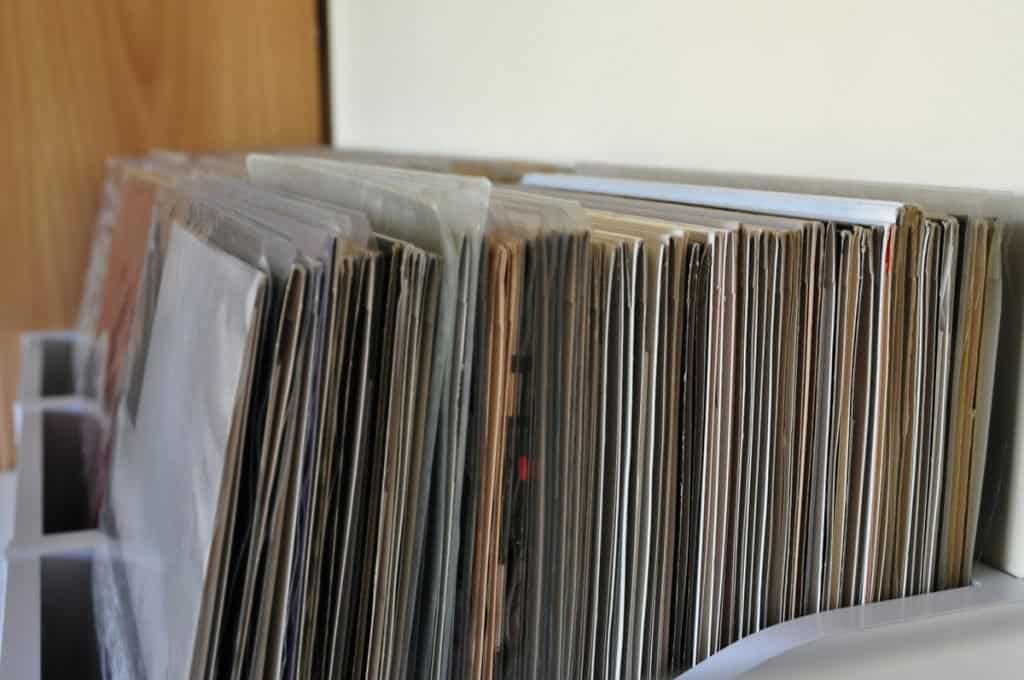
Well, first things first, back to basics – make sure that you store your records vertically. Yes – even if you don’t have the cover.
If you recently lost a cover, or multiple covers, for your records, you can use paper towels or soft clothes on each side of the record to keep it from scratching or warping. This technique will work in the short term, but this won’t be functional forever in the long run.
A large microfiber towel in-between them would also help protect the vinyl from scratching or warping. Finally, you want something soft that you can use temporarily to save the record from outside elements damaging it.
Luckily, you can purchase replacement vinyl record covers. Most are within the price range of $12 to $30.
If you’re the creative type, purchasing replacement covers might be the perfect way to customize your collection. Check out this article from All For Turntables for ideas.
You can also try to make your own sleeves from cereal boxes, some acid-free paper, or any other materials that you have lying around. Just be sure to purchase one of those paper inserts for your record to protect it from chemicals or other contaminants that might be on your recycling!
Conclusion
While you may not see old-school DJs carrying around their collections in milk crates anymore, milk crates are almost as classic as the vinyl itself.
Old milk crates have and do work well if you’re looking for an iconic and durable means of storing your collection. Their dimensions fit albums perfectly, allow for vertical storage, and have handles for portability.
VacationVinyl.com is a participant in the Amazon Services LLC Associates Program, an affiliate advertising program designed to provide a means for sites to earn advertising fees by advertising and linking to Amazon.com. We also participate in other affiliate programs which compensate us for referring traffic.

